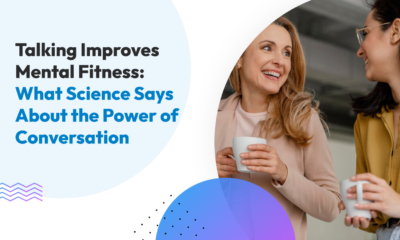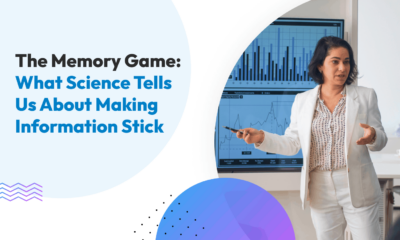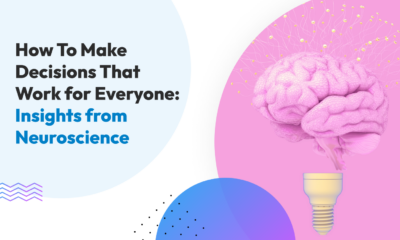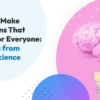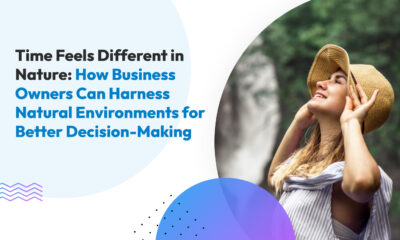Science Says
New Study Says There IS a Magic Door Into Your Customer or Coworker’s Brain
Running a business means constantly interacting with and often negotiating with people: whether they be clients, suppliers, government, investors, business partners, contractors, or staff. We wish we could always be on the same page, then all our interactions would be smooth, cooperative, and yield the results we want.
Think about a best friend or someone you met for the first time, and you just “click” – that’s brain syncing. Wouldn’t it be nice if this always happened, especially if it happened with people that matter in or for your business?
Researchers have a term for exactly that, the moment when our brains sync up or mirror each other during a social interaction. They call this INS or Interpersonal neural synchrony, and it is observed when two or more people engage in activities like working on a task together or conversing. This phenomenon is believed to be the foundation of a lot of social behavior that allows us to connect and engage with others.
But how does this brain syncing happen? And is there anything we can do to trigger this mirroring of brain activity to possibly fast-track social bonding, cooperation, and coordination? This study by Atesh Koul, Davide Ahmar, Gian Domenico Iannetti, and Giacomo Novembre looks into what kind of INS happens during natural, unguided social interactions and how some simple common physical behaviors are related to our brains working on the same wavelength as another.
Face-to-Face Matters
Something as simple as visual contact can initiate INS or brain syncing. No exchange of words or a shared goal or task is necessary!
In the study, the researchers monitored participants’ brain activity as they were asked to sit across each other and behave naturally without speaking. The result was that simply looking at each other triggered correlated activity in certain brainwave frequency bands between participants – particularly the beta brainwaves and gamma brainwaves.
Beta waves are associated with active, alert, and attentive mental states, while gamma waves are linked to intense cognitive processing and higher mental activities like memory, attention, perception, and learning.
Meanwhile, if the partners couldn’t see each other, no activation of similar brainwaves was observed.
Action Plan: Getting on the same wavelength takes as little as seeing each other! Knowing how big a role visual contact plays, make the most of in-person meetings or at least video meetings and conversations. This could mean you could come to a quicker consensus and shared understanding in a given situation compared to interacting without seeing one another through phone calls, emails, or text messages.
Remote work setups may limit this kind of visual connectedness. If you work with teams and use a lot of messaging apps and project management tools to communicate, why not work in a regular video meeting to see if this enhances communication effectiveness and improves overall teamwork? Instead of phone calls or texting with clients or contractors, switch it up sometimes and set up a quick video call.

No Agenda Can Serve a Purpose
This study showed that brain sync can arise from spontaneous and unstructured interactions. Previous studies on INS involved monitoring brain activity in groups assigned specific tasks like playing instruments, games, solving puzzles, or imitating movements. In this experiment, the participants were not assigned any activity or shared objective, just to sit across and notice each other without speaking, and still, brain sync was observed.
Action Plan: As a busy entrepreneur, you might tend to squeeze productivity out of every waking moment and set a business-related agenda for every activity. This study tells us that spontaneous and unstructured interactions can serve a purpose, too.
Leave room for spontaneous connection with others! Not every appointment or social engagement has to have an agenda. It might be worthwhile to go wine tasting with a client or to attend networking events without focusing on selling oneself. We’ve heard a few success stories of entrepreneurs finding clients and business connections at parties or sports events. These more natural, unforced interactions make way for brain syncing that can lead to mutually beneficial outcomes.
Connecting Without Words: Triggering Brain Sync With Reciprocated Body Language
Have you ever had a meeting where the other person barely made eye contact and showed minimal facial expression and body movement? You probably felt disinterest, maybe a lack of respect, but definitely a lack of connection.
It turns out that mirroring body language is a precursor to INS. Partners in the experiment, when they could see each other, engaged in spontaneous synchronized or reciprocated social behavior like exchanging eye contact, smiling, and body movements. These reciprocated nonverbal social signals were found to predict the activation of similar brainwaves in the partners better than when only one member of a dyad engaged in nonverbal cues.
Action Plan: When meeting with anyone, whether virtually or in person, be mindful of being completely present and showing this in your body language that mirrors or is in sync with the other.
For virtual interactions, a good way to initiate more brain syncing is by positioning your camera to show both your face and body movements. Use an automated transcription tool so you don’t need to look down to write notes during your virtual meetings. Instead, leave your eyes and hands free to fully engage and mirror nonverbal signals with whoever you are meeting with.
Some Nonverbals Are More Powerful Than Others?
When researchers drilled down into the correlation of shared social behaviors with specific types of brainwaves, they found that reciprocated smiling or body movement are good predictors of gamma brain waves syncing. Meanwhile, reciprocated eye contact is a good predictor of beta wave syncing.
If you recall, gamma brainwaves are associated with higher cognitive processes like learning, memory consolidation, and complex information processing. It appears that exchanges in facial expressions and gestures activate these higher cognitive processes.
Action Plan: Don’t be stingy with the smiles and natural body movements when interacting with clients, co-workers, or anyone else you want to get on the same wavelength with! Knowing that we tend to mirror each other may cause the other person to activate more of the information processing, learning, and memory functions of the brain in tandem with you.
At the same time, you can use their body language and facial expressions as an indicator of how mentally engaged they are with you as well. And if you notice their nonverbals are a bit lackluster, maybe you need to change gears in terms of your approach.

Familiarity is Key
This study was conducted on pairs of individuals who knew each other. On average, each pair had known each other for over six years and rated their ‘closeness’ as fairly high at about eight out of ten, with ten being the highest level of closeness. All the above observations came about in the interactions of individuals with existing, relatively close relationships. What happens if you put complete strangers in the same scenario? It remains an open question, according to the researchers.
Action Plan: Build relationships with your stakeholders, as these make it easier to achieve INS. With a solid relationship, brain sync can begin with something as simple as seeing each other and reciprocating nonverbal social behaviors. Take the time to get to know suppliers, business partners, and clients even before you ‘need’ something from them.
But you don’t have to limit yourself to networking events, dinners, or coffee to get to know these people who are crucial to your business. You can use social media as a means to initiate and nurture relationships, too!
Making Instagram or Facebook posts and reels that showcase your personality and values will introduce you to potential clients and partners. Engaging with them in the comments, DMs, or in follow-up posts allows you to get to know them in return. This familiarity lays the groundwork for smoother future interactions.
Wrap Up
Brain sync is crucial for all our social connections. This study reminds us of the important elements to achieve this, even under unforced, natural interactions. First off, relationship-building is an important investment that will yield benefits for future interactions. Visual contact and exchanging spontaneous non-verbal behaviors are also crucial to achieving the activation of similar brainwaves.
These insights can help with our personal, family, and support system relationships as well! Having the ability to achieve INS with people in our personal and professional spheres will lead to more harmony and easier collaboration.





